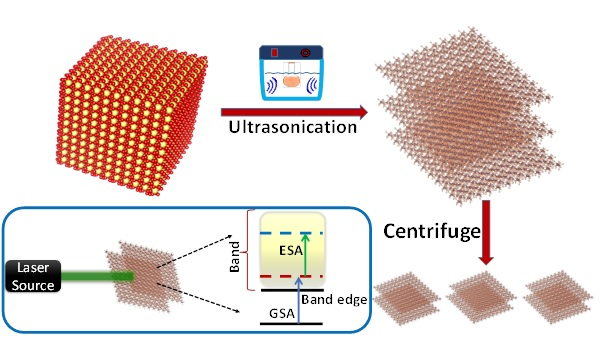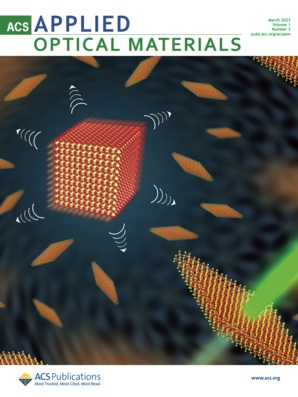2D nanoflakes of material extracted from iron ore can protect sensitive optical equipment from light-induced damage
[Posted on 27 July 2023]

Nanoflakes of a material called hematene extracted from iron ore have been found capable of withstanding and acting as shield from high laser intensities. Hence it could be used to make devices called optical limiters that can protect sensitive optical equipment from light-induced damage.
Radiation from laser sources is highly concentrated and powerful and can be detrimental to sensitive equipment such as sensors, detectors, and other optical devices. When the input intensity increases optical limiters control the amount of light that passes through, thereby preventing damage to the optical component. These devices are often useful in laser technologies, military, telecommunications, aircrafts, and scientific research in several ways.
The MESO (Materials for Energy Storage and Optoelectronic Devices) Group of the Department of Physics, Sanatana Dharma College, Alappuzha, in collaboration with the Ultrafast and Nonlinear Optics Lab of the Raman Research Institute, Bangalore, has come up with a new and highly efficient optical limiter using a novel 2D material, ‘hematene’.
They found that 2D nanoflakes of hematene, a material extracted from iron ore or hematite are capable of withstanding very high laser intensities, and they exhibited excellent optical limiting of green laser light (532 nm) while maintaining a high linear transmission (about 87%) for low-intensity light.
The nanoflakes of lateral dimensions less than 10 nm, prepared by applying ultrasonic waves to hematite in liquid medium ( facile exfoliation process) for a definite period to exfoliate the 2D nanoflakes of hematene were also found to be highly stable after year-long storage under ambient conditions, indicating tremendous potential as an optical limiter for futuristic applications.
This research work carried out at SD College using the instrumentation facility procured through the Fund for Improvement of S&T Infrastructure (FIST) programme of the Department of Science and Technology (DST) programme, was recently published in ACS Applied Optical Materials.
Link to the article: https://pubs.acs.org/doi/10.1021/acsaom.2c00071
Link to the cover page: https://pubs.acs.org/toc/aaoma6/1/3
